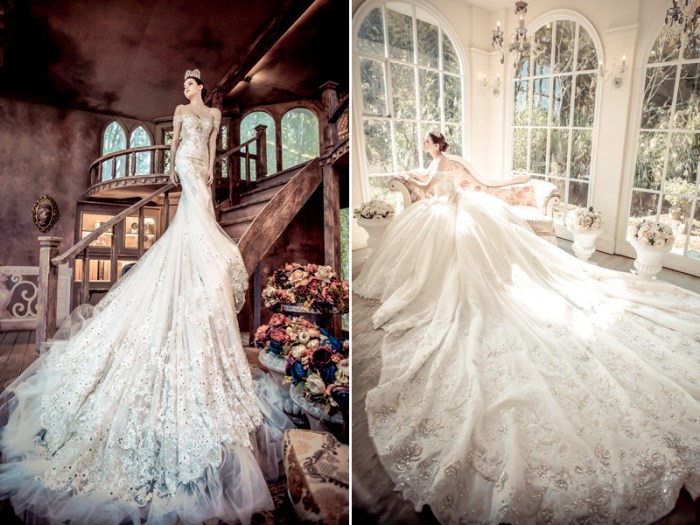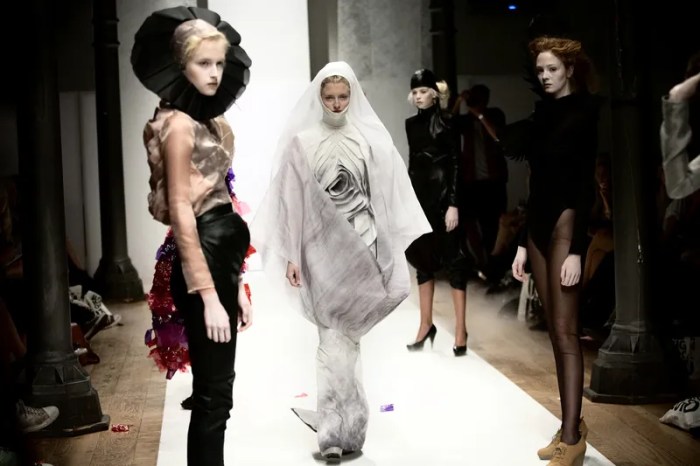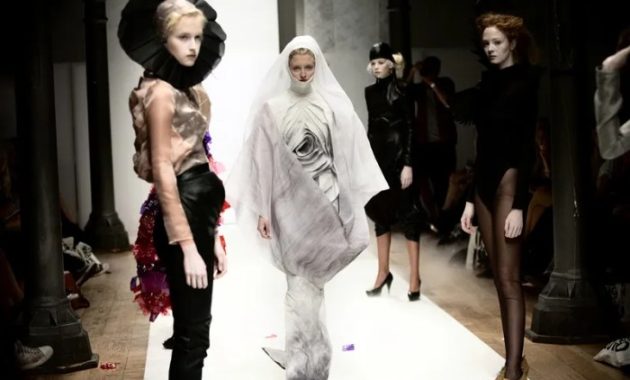Defining “Fall Short” Wedding Dresses

Source: praisewedding.com
Fall short wedding dresses – The term “fall short” when applied to wedding dresses encompasses a range of disappointments, extending beyond simple dissatisfaction. It represents a gap between a bride’s envisioned perfect dress and the reality of the garment she ultimately selects or receives. This discrepancy can stem from various factors, impacting both the aesthetic and emotional aspects of the wedding planning process.
Interpretations of “Fall Short”
Several interpretations define a wedding dress that “falls short.” Budget limitations might force compromises on fabric quality, embellishments, or designer choices. Style mismatches occur when the chosen dress doesn’t align with the bride’s personal style or the overall wedding theme. Quality issues, such as poor stitching, ill-fitting seams, or subpar materials, can also contribute to a feeling of disappointment.
For instance, a dress advertised as silk might be made from a cheaper polyester blend, or beading may be unevenly applied.
Examples of Dress Features that Fall Short

Source: shopify.com
Specific dress features frequently cause dresses to fall short of expectations. These include unexpected sheerness in the bodice, a less-than-flattering silhouette, uncomfortable or restrictive fabrics, poorly executed alterations, or a color that differs significantly from the online or showroom sample. A dress with a low-quality lining that is itchy or transparent can detract from the overall experience.
Emotional Impact of a Dress Falling Short
When a wedding dress falls short, the emotional impact can be significant. Disappointment, frustration, and even regret are common feelings. The wedding dress often holds symbolic weight, representing a dream and a significant investment. The feeling of falling short can affect the bride’s self-confidence and overall enjoyment of the wedding planning experience.
Common Reasons for Wedding Dresses Falling Short
Several factors contribute to brides finding their wedding dresses unsatisfactory. Unrealistic expectations, poor communication with vendors, and the challenges of online shopping are major contributors to this problem.
Top Reasons for Dissatisfaction
Three common reasons why brides are dissatisfied with their dresses are: unrealistic expectations regarding budget and style; poor communication with the bridal shop or designer about alterations and sizing; and the difficulties associated with online dress purchasing.
Fall short wedding dresses offer a breezy, playful alternative for warmer months. However, if you’re attending a winter wedding, you’ll need something more substantial. For truly stunning winter wedding guest attire, check out the amazing options available at best winter dresses for weddings to find the perfect complement to your fall short dress for the change of seasons.
Role of Unrealistic Expectations
Often, brides develop unrealistic expectations based on idealized images from magazines, social media, or television. This can lead to disappointment when the actual dress doesn’t match the idealized vision. Clear communication and realistic expectations are crucial for a positive experience.
Online vs. In-Store Shopping

Source: heraldweekly.com
The experience of purchasing a wedding dress online versus in-store differs significantly. Online shopping offers convenience but lacks the personal touch and the ability to try on the dress before purchase. In-store shopping allows for fittings and personalized consultations but can be more time-consuming and potentially more expensive.
| Shopping Method | Fit Issues | Material Quality | Overall Satisfaction |
|---|---|---|---|
| Online | High likelihood of sizing discrepancies | Difficult to assess accurately from images | Potentially lower due to lack of physical interaction |
| In-Store | Can be minimized with proper fittings | Can be assessed firsthand | Generally higher due to personal interaction and fittings |
Addressing Shortcomings in Wedding Dress Selection
Proactive steps can minimize the chances of a dress falling short of expectations. Careful planning, realistic budgeting, and clear communication are key to a successful dress shopping experience.
Checklist for Avoiding Dress Disappointments
A comprehensive checklist should include: setting a realistic budget; defining a clear style preference; researching designers and boutiques; scheduling appointments well in advance; bringing trusted advisors for opinions; and trying on a variety of dresses to compare styles and fits.
Setting a Realistic Budget and Managing Expectations
Establishing a realistic budget is crucial. This includes factoring in alterations, accessories, and potential unforeseen costs. Managing expectations involves being realistic about body type, style preferences, and the limitations of mass-produced or altered garments. Browsing dresses within a realistic budget range and focusing on dresses that genuinely resonate with personal style will significantly reduce the chances of dissatisfaction.
Step-by-Step Guide for Unhappy Brides
- Contact the bridal shop or designer to discuss the issues.
- Explore alteration options to address fit or style concerns.
- If alterations are insufficient, inquire about return policies.
- If a return is not feasible, consider finding a new dress, allowing ample time before the wedding.
Visual Representations of “Fall Short” Dresses
Several scenarios illustrate how a wedding dress can fall short. These examples focus on visual details and the overall aesthetic impact, highlighting the importance of careful consideration during the selection process.
Scenario 1: Ill-Fitting Dress
A mermaid gown made from heavy satin, intended to accentuate the bride’s figure, falls short due to poor fitting. The seams pull across the bust and hips, creating an unflattering silhouette. The heavy fabric feels restrictive, and the embellishments, though beautiful, are unevenly placed, detracting from the overall look.
Scenario 2: Fabric Disappointment
A lace A-line dress, pictured online as flowing and romantic, arrives with a cheap, stiff lace that lacks the delicate quality advertised. The color is duller than expected, and the lining is scratchy and uncomfortable. The silhouette is fine, but the poor quality of the fabric diminishes the overall aesthetic.
Scenario 3: Unflattering Silhouette
A ballgown with a heavily embellished bodice and a voluminous skirt is initially appealing, but on the bride, the proportions are off. The bodice is too tight, emphasizing areas the bride wanted to downplay, while the skirt overwhelms her frame. The fabric, while luxurious, doesn’t drape well, further detracting from the silhouette.
Successful Dress Design
A successful wedding dress features a flowing A-line silhouette in lightweight crepe fabric. Delicate, hand-sewn lace appliqués adorn the bodice and sleeves, adding subtle elegance. The dress has a comfortable lining and a flattering fit that skims the body without being restrictive. The color is a soft ivory that complements various skin tones.
Minor Alterations for Improvement
A dress initially perceived as “falling short” due to a slightly too-long hem and a slightly loose bodice can be significantly improved with minor alterations. Taking up the hem by two inches creates a more polished look. Adding darts to the bodice provides a more fitted and flattering silhouette, enhancing the overall appearance and comfort.
The Impact on the Wedding Day Experience
A bride’s satisfaction with her wedding dress significantly impacts her overall wedding day experience. While the dress is only one element, its importance to the bride’s confidence and enjoyment cannot be overlooked.
Consequences of Dress Dissatisfaction, Fall short wedding dresses
Dissatisfaction with the wedding dress can lead to increased stress, negative self-image, and reduced enjoyment of the day. The bride might spend the wedding preoccupied with the flaws in her dress, rather than focusing on celebrating her marriage.
Managing Negative Feelings
Strategies for managing negative feelings include focusing on the positive aspects of the wedding, reminding herself of the significance of the day, and surrounding herself with supportive loved ones. Professional help may be beneficial for brides experiencing significant distress.
Importance of the Wedding Dress
While the wedding dress is an important symbol, it is only one element of the wedding day. The love shared between the couple, the presence of loved ones, and the overall atmosphere contribute far more significantly to the lasting memories of the event.
User Queries: Fall Short Wedding Dresses
What should I do if my dress arrives damaged?
Immediately contact the seller or retailer. Document the damage with photos and follow their return or repair policy.
Can I return a wedding dress if I change my mind?
Most retailers have specific return policies; check the terms and conditions before purchasing. Custom-made dresses are rarely returnable.
How much should I budget for alterations?
Alteration costs vary widely depending on the extent of changes needed. It’s wise to budget 10-20% of the dress cost for alterations.
What are the most common alteration requests?
Hemming, taking in the waist or bust, adjusting straps, and adding or removing sleeves are frequently requested alterations.

